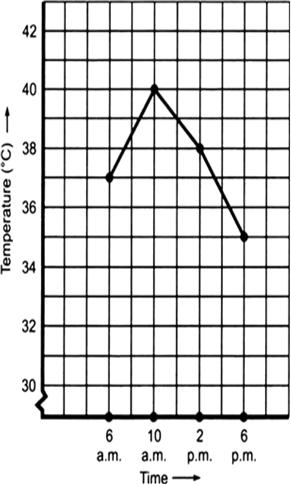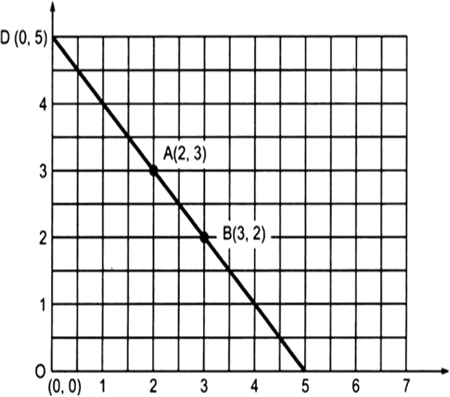Introduction to Graphs
The following graph shows the temperature forecast and the actual temperature for each day of a week.
(a) On which days was the forecast temperature the same as the actual temperature?
(b) What was the maximum forecast temperature during the week?
(c) What was the minimum actual temperature during the week?
(d) On which day did the actual temperature differ the most from the forecast temperature?
(a) The forecast temperature was the same as the actual temperature on Tuesday, Friday and Sunday.
(b) The maximum forecast temperature during the week was 35° C.
(c) The maximum actual temperature during the week was 15° C.
(d) Difference between the actual temperature and the forecast temperature on
Monday = 17.5° C – 15° C = 2.5° C
Tuesday = 20.5° C – 20° C = 0.5° C
Wednesday = 30.0° C – 25° C = 5° C
Thursday = 22.5° C – 15° C = 7.5° C
Friday = 15° C – 15° C = 0° C
Saturday = 30° C – 25° C = 5° C
Sunday = 35° C – 35° C = 0° C
Thus, the maximum difference was on Tuesday.
Sponsor Area
Some More Questions From Introduction to Graphs Chapter
Ratana fell sick. Her doctor maintained a record of her hody temperature, taken every four hours. It is shown in the following time-temperature graph.
(a) During which period the temperature showed a rising trend?
(b) During which period the temperature showed a downward trend?
(c) At what time the temperature was highest?
(d) At what time the temperature was lowest?
Plot the following points on a graph sheet. Verify if they lie on a line:
(a) A (4, 0), B(4, 2), C(4, 6), D(4, 2.5)
(b) P(1, 1), Q(2, 2), R(3, 3), S(4, 4)
(c) K(2, 3), L(5, 3), M(5, 5), N(2, 5)
Draw the line passing through (2, 3) and (3, 2). Find the coordinates of the points at which this line meets the x-axis and y-axis.
Write the coordinates of the vertices of each of these adjoining Figures.

State whether True or False. Correct that are false.
The number of litres of petrol you buy to fill a car’s petrol tank will decide the amount you have to pay. Which is the independent variable here? Think about it.
The following table gives the quantity of petrol and its cost.

Plot a graph to show the data.
Use the graph to find how much petrol can be purchased for Rs 800.
Draw the graphs for the following tables of values, with suitable scales on the axes,
Cost of apples

Mock Test Series
Sponsor Area
NCERT Book Store
NCERT Sample Papers
Sponsor Area